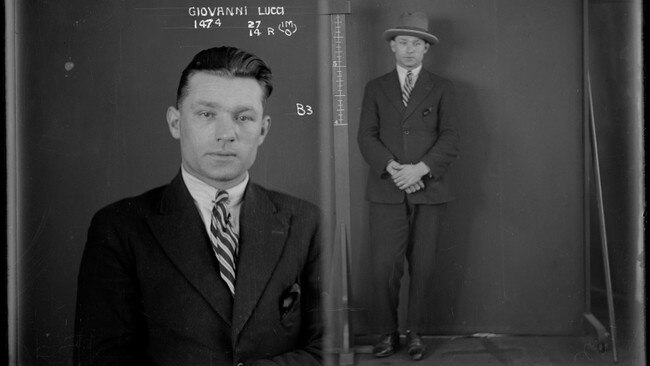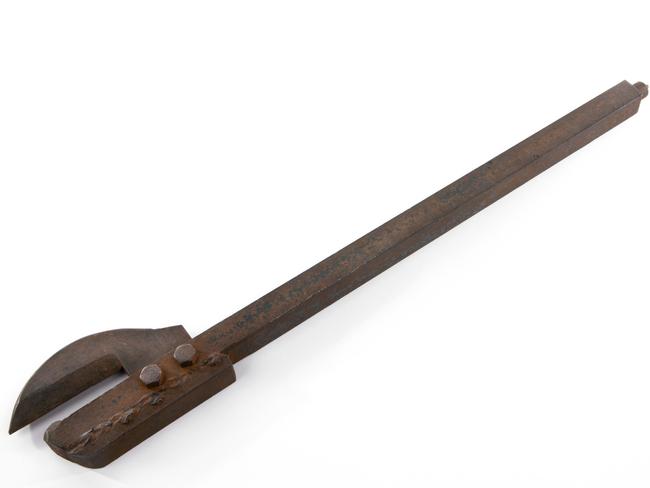How an Italian gang robbed Sydney blind, til they were caught
Giovanni Lucci was ‘The King’ in an Italian gang that carried out a string of robberies in Sydney in the 1920s. Detectives were struck by their precision, and their equipment.

Safe breaking has historically been a crude affair, usually involving gelignite and acetylene torches.
What struck detectives of Sydney’s Central Investigation Branch about a string of robberies in mid-1926 was their precision — the safes at the Green Coupon in Haymarket, the ABC Bank and a pawn shop on Oxford Street had been sliced clean through. Their only clue, found at one scene, was a piece of “Italian cloth”. Nobody in the 1920s talked about the Mafia, or even antecedents like the Camorra and Black Hand. But the detective derring-do that ensued was for Australia decidedly exotic.
As recounted in Vince Kelly’s classic The Shadow (1954), legendary undercover officer Frank Fahy was detailed to surveil three Italians who frequented a William Street cafe, whom he nicknamed The King, Shorty and Foxey. Though unable to understand a word they were saying, he studied them assiduously, reflected in a sugar bowl, and at length followed their trail to a garage on West Street. There, in a dimly lit workshop, Fahy discovered their secret: the trio methodically machined their own tools, including a knifed wheel and smaller control wheel with clamps and levers, and this enormous wrench (pictured, below) now part of the collection at Sydney’s Justice & Police Museum. The King, it turned out, was a 28-year-old ex-serviceman engineer with a background in submarines, Giovanni Lucci (pictured, below left); his confederates were 28-year-old labourer Geioli Martini and 43-year-old seaman Alberto Borri. Weeks of watching established that the garage was rented from a 30-year-old countryman Pietro Sebastiani and that the tools were stored between times with 31-year-old mechanic Luigi Bordoni. Investigation further suggested an interest in the Union Bank in Pulsford Chambers on Castlereagh Street, above which a Greek associate, Punos Chryssikos, rented an office on their behalf. The police began to stake it out.
Detectives William Barrett and Hubert Thompson watched Lucci, Martini and Borri enter Pulsford Chambers after the bank closed on Saturday, July 31, 1926, bearing heavy suitcases and a bag containing what proved to be sandwiches, boiled eggs and red wine. They waited as the trio rolled back the linoleum on the floor above the bank to smash their way into the strongroom from above. What began as a scene like the heist in Jules Dassin’s Rififi (1955) dissolved into chaos as Thompson barked: “Throw up your hands every man. Don’t move or I’ll shoot.”

Truth, the tabloid newspaper, played up the angle of the excitable continentals: “Inside a babel of excited voices in Italian. Then Barrett, racing to the scent, flashed on the torch. Three Italians gibbering and gesticulating, stood in the room above the bank.”
A dragnet closed on their apparent confederates. Reporting the arraignment at Darlinghurst Sessions, the Sun also rather revelled in the cosmopolitanism of it all, reporting the characters with novelistic flourishes: “A sprinkling of swarthy foreigners among the audience was reminiscent of the back of the theatre gallery during a grand opera season …
“Lucci, who is alleged to have told the police, when caught, that they were ‘too clever’, is a tall, well-built young man, who is continually smiling. He is not a typical Southern European. He is fair and blue-eyed.
‘Martini is also big and fair, but more serious than Lucci. He is square-jawed and determined-looking. Borri … shows signs of a harder life than the others. He is short and toil-worn, and looks all his 43 years.
“Sebastiani … is more typically Italian than the others. He is short, slim, and dark, and smiles lightheartedly. Chryssikos, whose age is given on the charge-sheet as 42, looks older. He is grey-haired and his neatly clipped moustache is grizzled. He is dapper, well-groomed, and neatly dressed.
“Bordoni is of medium stature, olive-skinned and serious-looking.”
In fact, only the trio found in flagrante would be convicted, receiving four years’ hard labour. But the Crown was forcefully impressed by the group’s equipment: drills, hacksaws, bolt cutters, master keys, candles, torches and that knifed wheel. “This will cut through an inch of steel as easily as it would cut through a carrot,” declared the prosecutor.
This, Kelly recounted, actually irritated The King, who complained to police that he had wasted too much time tempering his blades. “It was to make sure,” he said. “But your safes in this country, they are not good. My cutters they open them like tin — poof!”
The trio were deported at the end of their sentences, and their fates are unknown. Yet from the seriousness of Lucci’s criminal craftsmanship one infers that The King was not the kind to abdicate.
Each Object Lesson column takes a commonplace object and draws from it an otherwise hidden tale. To view the full collection visit theaustralian.com.au/topics/object-lesson



To join the conversation, please log in. Don't have an account? Register
Join the conversation, you are commenting as Logout